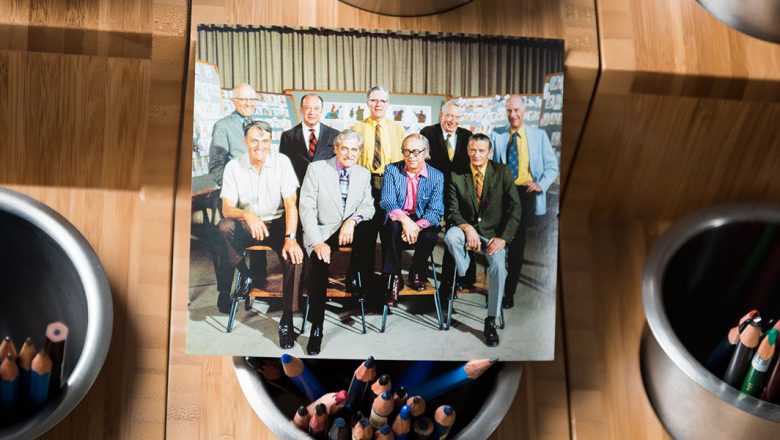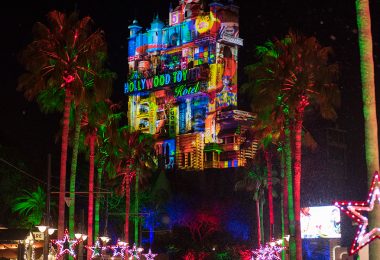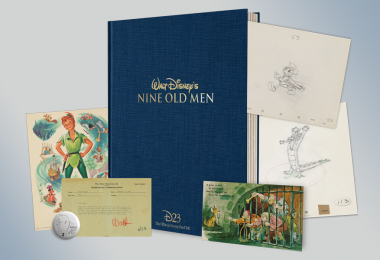By Jim Fanning
Stars. They are meant to shine. And even when these bright lights are not necessarily noticed or significantly celebrated, their brilliance continues to sparkle. So it is with the true luminaries of animation as produced by Walt Disney, his top team of elite animators he affectionately nicknamed the Nine Old Men. This “starring” group of extraordinarily gifted animators who perfected the art form they helped create did not go unheralded, even at the start. Beginning with Snow White and the Seven Dwarfs (1937), the nine extraordinary artists were credited individually or collectively—but aside from seeing their names on the screen, the audiences who filled theaters to see Disney’s films were, for the most part, unaware of the animation artisans who crafted the all-cartoon features.
That changed with Walt’s bold decision to move into the new medium of television with his weekly series, Disneyland. A TV show needs TV stars and, right out of the gate, Walt elected to showcase several of the nine—Marc Davis, Milt Kahl, and John Lounsbery—even before the prolific producer took to the spotlight to introduce “Walt Disney’s Magic Kingdom,” the then-under-construction Disneyland park.
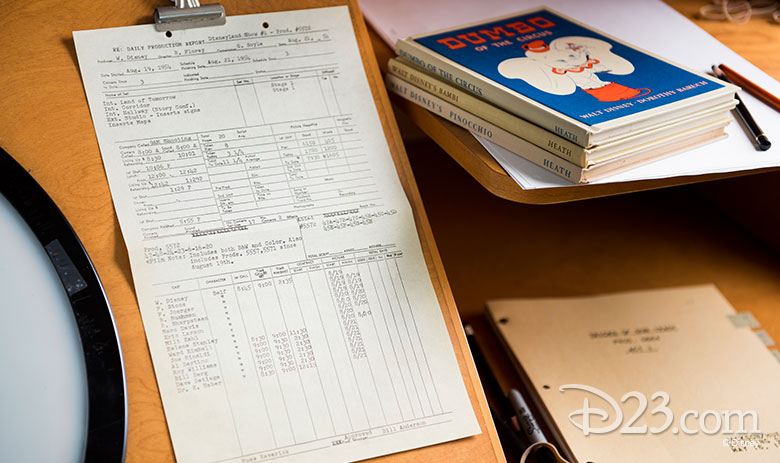
As noted on the Daily Production Report detailing the filming for “Disneyland Show #1” on August 21, 1954, the animators were filmed for the show as they sketched and drew studies of live-action animation model Helene Stanley enacting the role of Briar Rose waltzing to “Once Upon a Dream.” Interestingly, for some long-forgotten reason, John Lounsbery is not listed on the production report even though he’s in the TV episode as broadcast on October 27, 1954, while Eric Larson is included though he does not appear in the completed show. (Ward Kimball is also listed, as he was seen in the show in a separate segment, expounding on the “Tomorrowland” episodes he was producing and directing.)
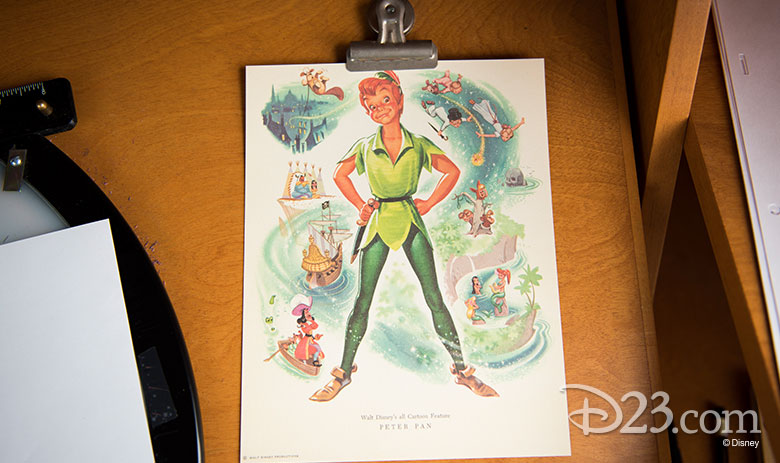
This coincided with these star artists’ unquestioned prominence at the very top of the animation industry and art form, for at this point they had been the lead artistic talents on such beloved classics as Cinderella (1950), Peter Pan (1953) and Lady and the Tramp (1955)—and, as seen in the television episode, now were busy creating Sleeping Beauty (1959).
The prominence of this remarkable cadre of animation creators—and Walt Disney’s pride in them—is even more pronounced with the episode broadcast on February 13, 1957. A fun- and fact-filled exploration of the technical “tricks” behind the art of animation, “Tricks of Our Trade” unequivocally presents four of the nine as shining stars of animation.
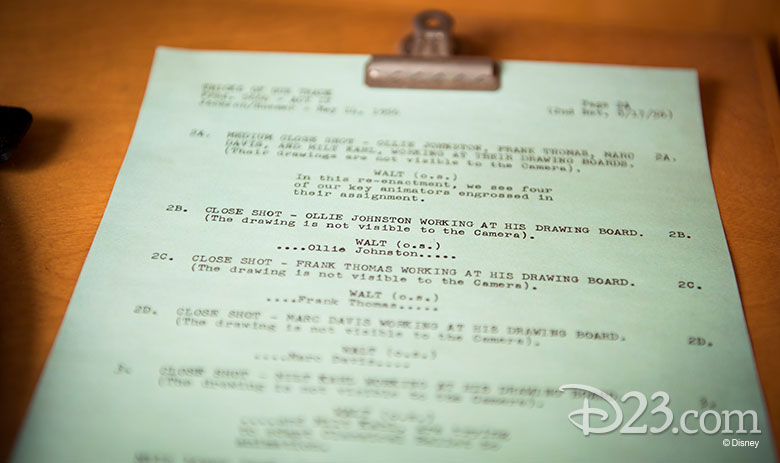
As seen in the script page from this episode telecast during the third season of the Disneyland TV series, Walt proudly introduces “four of our key animators,” Ollie Johnston, Frank Thomas, Marc Davis, and Milt Kahl. As the scene goes on (the beginning of this interaction is seen at the bottom of the script page), the foursome gets to display their own acting talents, as opposed to their usual “acting with a pencil,” as they artistically—and amusingly—transform ballerina Helene Stanley into an ostrich, an elephant, and a hippo, a la “The Dance of the Hours” in Fantasia (1940).

Flash forward two decades to 1974. Following Disney’s spectacular 50th anniversary celebration the year before—highlights of which included a prestigious film retrospective at New York’s Lincoln Center and the publication of several seminal books on Disney as art—the Nine Old Men were firmly established as the elder statesmen of animation. These celebrated animation stars were lauded by a new generation of filmmakers and animators who had grown up savoring the onscreen artistry of the nine. And it was largely due to the efforts and enthusiasm of young fans that Alice in Wonderland returned to theaters for the first time since its financially disappointing original release in 1951. The breathtaking artistry of this brilliantly animated film—featuring the work of all of the Nine Old Men—was finally recognized, as the “far-out” invitation to a Studio screening for the far-ahead-of-its-time film attests.
“Of all the things I’ve done,” Walt once stated, “the most vital is coordinating those who work with me and aiming their efforts at a certain goal”—and in coordinating the creative efforts of the Nine Old Men, the goal was not only the perfection of this lively art form but also the creation of an entire mythos and an all-encompassing philosophy that defines Disney.

In 1989, only the second year of the esteemed Disney Legends program, all of these artistic stars were honored as Disney Legends, along with pioneering Disney animator Ub Iwerks, making up a “Founders Circle.” With the momentous ceremony on July 19, 1989, these true superstars of animation were permanently enshrined in the firmament of Disney history, where they will always shine. For, as the rare memento of the event—the elegant Disney Legends program—states, “Collectively, they helped establish The Walt Disney Company… The impact of their work is immeasurable.”
D23 Gold Members who join or renew their Gold Membership in 2017 will receive Walt Disney’s Nine Old Men—a one-of-a-kind collection featuring 23 re-created artifacts, including those seen here. Discover more about the D23 2017 Gold Member Gift and the Nine Old Men at D23.com/NineOldMen.


